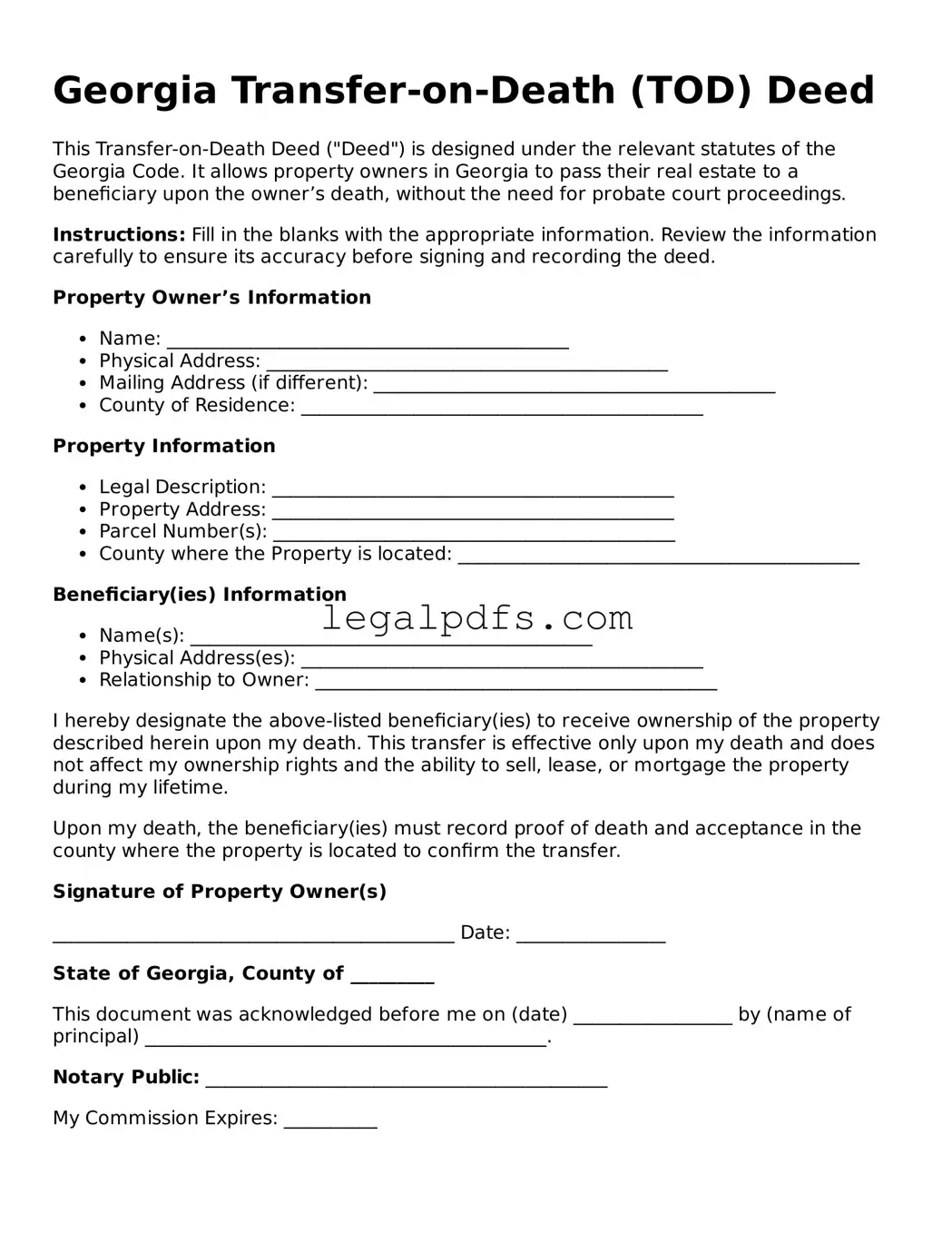What is a Transfer-on-Death Deed in Georgia?
A Transfer-on-Death Deed (TODD) in Georgia is a legal document that allows property owners to pass their real estate directly to a beneficiary upon their death, bypassing the need for probate court. This deed is executed and recorded while the property owner is alive but only takes effect at the time of their death.
Who can use a TODD in Georgia?
Any individual who owns real property in Georgia and desires to transfer their property upon death without the complexities of probate can use a TODD. This is particularly useful for individuals seeking a simpler method to manage the transition of their real estate assets.
How do I create a Transfer-on-Death Deed?
To create a Transfer-on-Death Deed, the property owner must complete a TODD form that includes a legal description of the property, the name of the beneficiary, and must sign the deed in front of a notary public. Once notarized, the deed must be filed with the appropriate county recorder's office before the owner's death.
Can a TODD be revoked or changed?
Yes, a TODD can be revoked or changed at any time before the death of the property owner. To revoke or change the deed, the owner must complete a new deed that either expressly revokes the previous one or designates a new beneficiary and goes through the same signing and recording process.
Is there a filing fee for recording a TODD in Georgia?
Yes, there is a filing fee for recording a Transfer-on-Death Deed with the county recorder's office in Georgia. The amount of this fee may vary by county, so it's advisable to contact the local recorder's office directly for the current rates.
What happens to the property if the beneficiary predeceases the owner?
If the designated beneficiary predeceases the owner, the Transfer-on-Death Deed becomes void, and the property will be part of the owner’s estate, subject to distribution under the terms of the owner's will or Georgia’s intestate succession laws if there is no will.
Does a TODD in Georgia avoid estate taxes?
A Transfer-on-Death Deed allows for the avoidance of probate; however, it does not necessarily avoid estate taxes. The value of the property transferred via a TODD may still be subject to federal and state estate taxes depending on the overall value of the estate.
Can a property with a mortgage be transferred using a TODD?
Yes, a property with a mortgage can be transferred using a TODD. However, the beneficiary becomes responsible for the remaining mortgage payments after the transfer. Therefore, it’s crucial for property owners to communicate with the beneficiary about the obligations that come with the property.
What information is needed to complete a TODD?
To complete a TODD, the following information is required: the legal description of the property, the full name and address of the beneficiary, and the signature of the property owner, which must be notarized. It is also important to clearly state that the transfer of the property will occur upon the owner's death.
How does a Transfer-on-Death Deed affect the beneficiary’s inheritance?
The beneficiary receives the property outright upon the death of the property owner, without the need for probate. This means the property is transferred quickly and directly to the beneficiary, thus simplifying the inheritance process. However, recipients should be aware of any liabilities, such as mortgages or other encumbrances on the property, that may also transfer.
